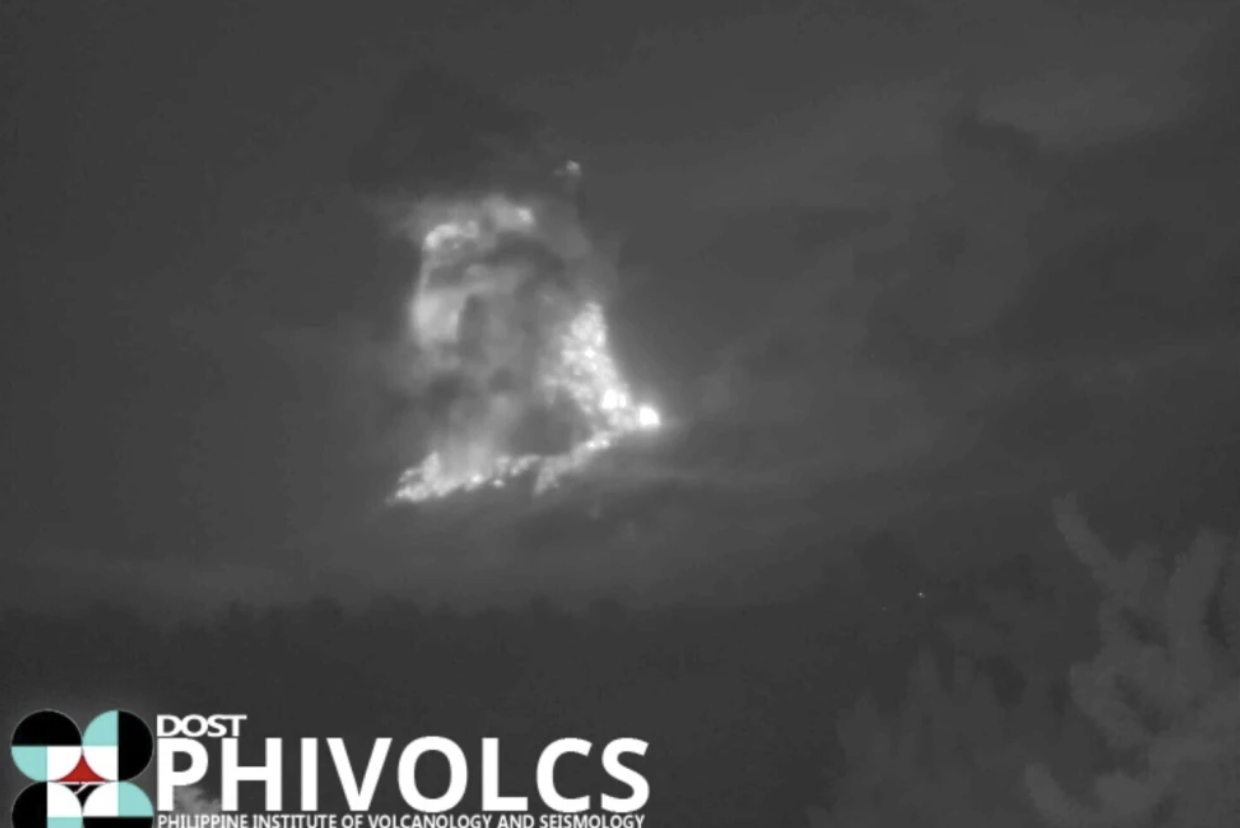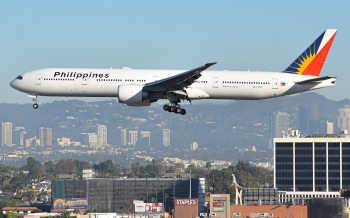A violent volcanic eruption in the Philippines has forced airlines to cancel around 30 domestic flights.

On the evening of Monday June 3, the Kanlaon volcano experienced an “explosive eruption” that lasted six minutes. According to the PHIVOLCS, the volcanic eruption spewed hot volcanic ash and gasses three miles (~16,000 feet) into the atmosphere.
In response to the eruption, the Civil Aviation Authority of the Philippines (CAAP) issued advisories for domestic flights in the country, telling pilots to “...avoid flying near the volcano’s summit as ejecta from sudden phreatic eruptions could be hazardous…”
A phreatic eruption is caused by a build-up of steam in a volcano. This steam is created when the water inside of a volcanic basin evaporates underground.
Canceled Flights
Due to the volcanic eruption, multiple flights out of the Philippines' primary international airport, Manila Ninoy Aquino International (MNL) were canceled. At the end of the day on June 4, one day after the eruption, around 29 domestic flights were canceled. All of the canceled flights were planned to fly to destinations near the eruption of Mount Kanloan and Negroes Island (the island the volcano is situated on).
Large volcanic eruptions, particularly explosive eruptions, pose a significant threat to aviation safety. This is due to the ash and smoke that often come as a result of these violent natural events. If an aircraft pilot chooses to fly into or near a volcanic ash or eruption cloud, they risk scratching the fuselage of their aircraft and damaging their aircraft's jet or turboprop engines.
Volcanic Ash - Dangerous and (Sometimes) Microscopic
Volcanic ash can either be coarse or abrasive. When even a small amount of volcanic ash is ingested by an aircraft engine, it can clog engine intakes, and prevent the fan blades within a jet engine from properly rotating, leading to damaged engine blades and complete engine failure. The abrasive nature of volcanic ash also means that an aircraft’s paint and fuselage will be scraped and damaged by ash particles should the aircraft fly in an ash cloud.
In June of 1989, British Airways Flight 9 accidentally flew into a volcanic ash cloud that originated from an erupting volcano on an Indonesian island. The ash cloud was not detected by weather radar due to the cloud consisting mostly of dry ash.
When the 747-200 operating flight 9 began to fly into the ash cloud, the pilots noticed an effect similar to Saint Elmo's Fire. Shortly after, smoke smelling of sulfur began to fill the cabin of the aircraft. Around the same time, the first of four engines onboard the 747-200 flamed out. Soon after the other three engines followed.
Despite losing all engines, the pilots of flight 9 were able to glide their aircraft out of the volcanic ash cloud and restart their engines once the flight was clear of the cloud. Eventually, the 747-200 made an emergency landing at Jakarta Halim Perdanakusuma Airport.
This flight was the first major documented demonstration of the dangers volcanic eruptions pose to commercial aviation.
So the next time a flight is canceled, because of a volcanic eruption, now you know why.
Could You Survive a Plane Crash? The Unlikely Science of Plane Crash Survival » Thousands of Flights Impacted as Winter Storm Blair Hits U.S. » Export Development Canada Secures Aircraft Repossession in Nigeria Under Cape Town Convention »
Comments (0)
Add Your Comment
SHARE
TAGS
NEWS Philippines MNL Manila Volcano Eruption Canceled FlightsRECENTLY PUBLISHED
 Could You Survive a Plane Crash? The Unlikely Science of Plane Crash Survival
With air travel consistently being heralded as the safest form of public transport, most of us do not board a plane pondering our chances of survival in the event of a crash. But, is it possible to survive one?
INFORMATIONAL
READ MORE »
Could You Survive a Plane Crash? The Unlikely Science of Plane Crash Survival
With air travel consistently being heralded as the safest form of public transport, most of us do not board a plane pondering our chances of survival in the event of a crash. But, is it possible to survive one?
INFORMATIONAL
READ MORE »
 Maldivian Airlines Introduces First-Ever Widebody Aircraft, Plans New China Flights
Maldivian, the government-owned national airline of the Maldives, has just welcomed its first-ever wide body aircraft: the Airbus A330-200. With the new aircraft, the carrier also plans brand-new long haul international flights to China.
NEWS
READ MORE »
Maldivian Airlines Introduces First-Ever Widebody Aircraft, Plans New China Flights
Maldivian, the government-owned national airline of the Maldives, has just welcomed its first-ever wide body aircraft: the Airbus A330-200. With the new aircraft, the carrier also plans brand-new long haul international flights to China.
NEWS
READ MORE »
 Thousands of Flights Impacted as Winter Storm Blair Hits U.S.
Winter Storm Blair has unleashed a huge blast of snow, ice, and freezing temperatures across the Central and Eastern United States.
As of Sunday afternoon, over 6,700 flights and counting have been disrupted. This includes cancelations and significant delays leaving passengers scrambling to change flights and adjust travel plans.
NEWS
READ MORE »
Thousands of Flights Impacted as Winter Storm Blair Hits U.S.
Winter Storm Blair has unleashed a huge blast of snow, ice, and freezing temperatures across the Central and Eastern United States.
As of Sunday afternoon, over 6,700 flights and counting have been disrupted. This includes cancelations and significant delays leaving passengers scrambling to change flights and adjust travel plans.
NEWS
READ MORE »





